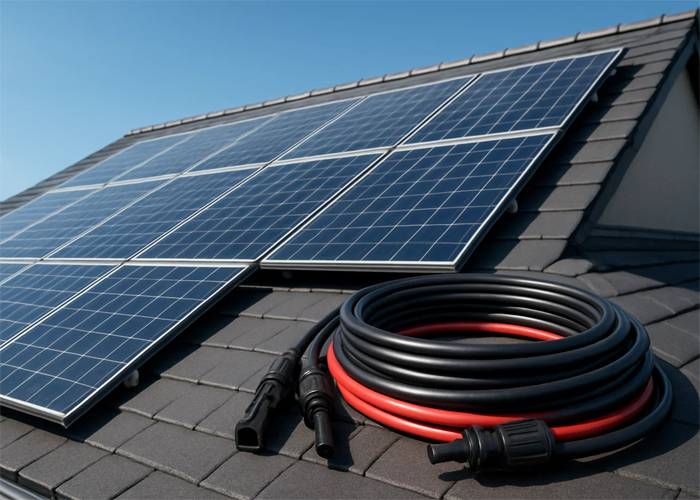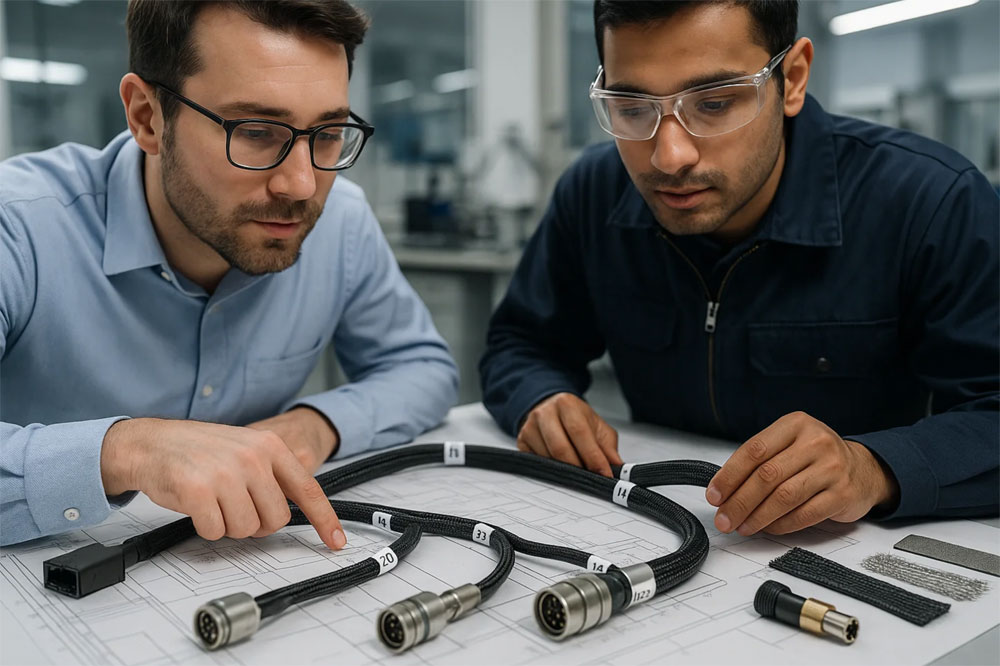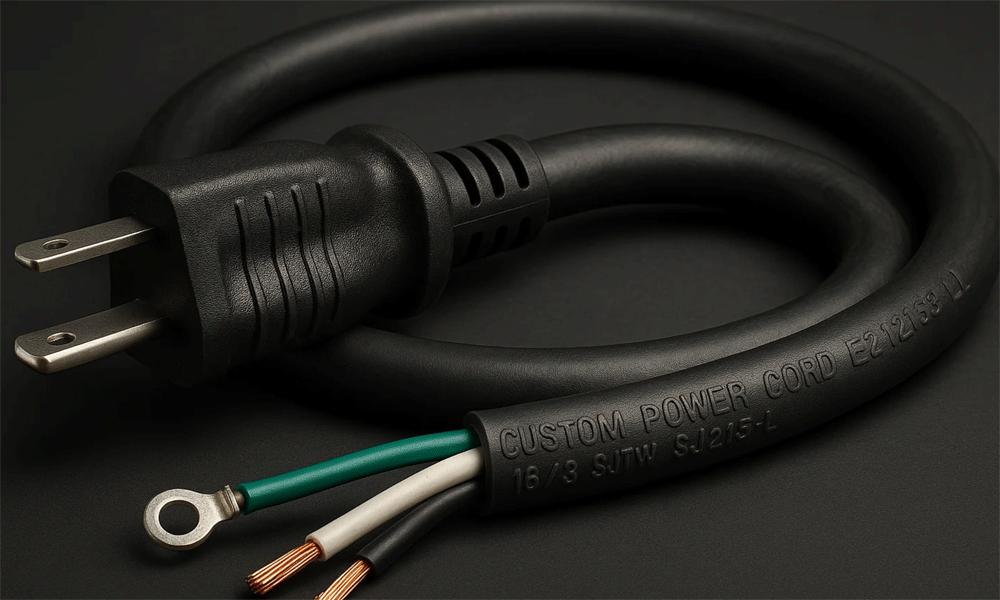Table of Contents
ToggleIntroduction
A custom cable harness assembly might look like a tangle of wires and connectors to the untrained eye, but its construction is a carefully engineered combination of materials and components, all specified to meet the project’s requirements. Understanding the “anatomy” of a custom cable harness means looking at each element that goes into it – from the wires and insulation, to the terminals and connectors, to protective coverings – and knowing why those choices were made. In this article, we will break down the key materials used, the rigorous testing such harnesses undergo, and the important certifications that govern their quality. By the end, you’ll see that a custom harness assembly is far more than a bundle of wires; it’s a bespoke system designed for performance, safety, and reliability.
Materials: The Building Blocks of a Harness
At the heart of any cable harness are the wires themselves. Custom harnesses allow you to select exactly the right type of wire for each circuit: for example, conductor material (usually copper, sometimes tinned or even high-strength alloys), strand count (solid vs. stranded for flexibility), and wire gauge to handle the required current.
Surrounding those conductors is the insulation and jacketing material. Common insulation materials include PVC, polyethylene, Teflon (PTFE), silicone, and others – each with different properties. For instance, PTFE might be chosen for high-temperature or aerospace harnesses, while a PVC blend could suffice for a consumer product. The harness design will specify insulation based on factors like temperature range, flexibility, chemical resistance, and flame retardance. Many harnesses also include an overall outer jacket or braiding for abrasion protection and neat bundling of wires. On one custom harness, you might see a braided nylon sleeve to protect against wear, or a heat-shrink tubing over critical junctions for strain relief.
Then there are the connectors and terminations – arguably the most visible parts. Custom harness assemblies can use a huge variety of connectors: standard housings, custom pin headers, lugs for power cables, crimped terminals, soldered connections, etc. A well-designed harness will use connectors suited to the electrical and environmental needs of the project (for example, sealed connectors for waterproof applications, or high-density micro connectors for compact electronics).
Every item in that bill of materials has a purpose: to ensure the harness performs its function reliably. For example, a strain relief boot might be added at the back of a connector to prevent wire flexing, and a specific epoxy potting might be used to seal and ruggedize a cable branch. The beauty of custom assemblies is this level of customization – you get to choose (or approve) each material so that the final harness is tailor-made for your application.
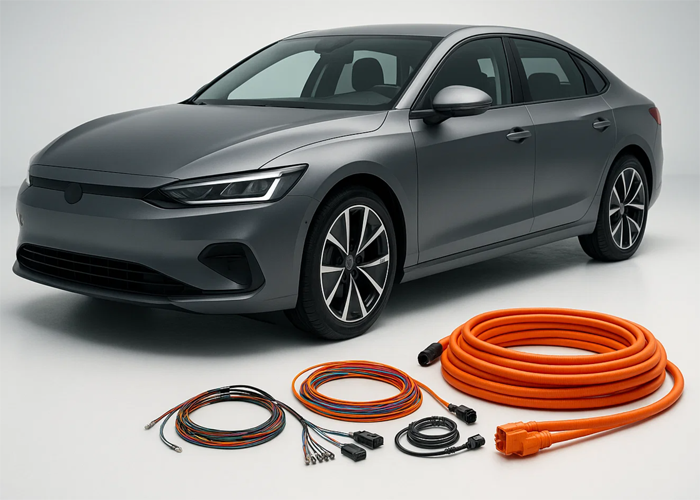
Testing: Ensuring Electrical and Mechanical Integrity
Once the harness is built, it undergoes thorough testing before it ever gets to the customer. Electrical tests are paramount. Every custom cable harness assembly should be 100% tested for continuity – making sure each wire is correctly connected end-to-end – and for isolation – ensuring no unwanted shorts or cross-connections exist between wires. For most harnesses, a tool called a continuity tester or cable analyzer is used; it passes a small current through each circuit and verifies the connectivity matches the design schematic.
Beyond basic continuity, many harnesses undergo HiPot testing (High Potential testing) where a high voltage is applied between conductors and shield/ground to verify that insulation can withstand it without breakdown. This is critical for safety, particularly in high-voltage or power cable assemblies; it ensures there are no insulation failures that could cause shocks or shorts under normal operating voltages. Good manufacturers will also perform resistance measurements to ensure connections (especially crimped terminals) are low-resistance and solid, and possibly voltage drop tests for longer harnesses to confirm they meet power delivery specs.
On the mechanical side, testing often includes tug or pull tests where each terminal or connector is given a specified tensile force to ensure it is crimped or attached strongly – nothing should pull loose under reasonable stress. There may also be environmental tests if the harness is meant for harsh conditions: for example, flex testing (bending the harness back and forth many times to ensure it doesn’t break), vibration testing (common for automotive/aerospace harnesses), or thermal cycling (exposing the harness to high and low temperatures to check that materials hold up and connections remain tight).
All these tests together form a quality gauntlet that a custom harness must pass before shipment. The end goal is that when the harness arrives to be installed in your product, every wire is correct and dependable.
Certifications: A Mark of Quality and Compliance
In the realm of cable harness assemblies, certifications and standards are crucial markers of quality and reliability. The most widely referenced is IPC/WHMA−A−620, which is the industry consensus standard for cable and wire harness assembly requirements and acceptability. When a harness assembly is said to be built to IPC/WHMA−A−620, it means the manufacturer followed rigorous criteria for crimping, soldering, insulation stripping, routing, lacing, and so on. Within IPC−A−620, there are different Class levels (1, 2, 3) depending on the criticality of the application, with Class 3 being for the highest performance needs like medical and aerospace.
Aside from IPC, other important certifications include ISO 9001 (for the manufacturer’s quality management system), and often UL certification for the harness or components. UL (Underwriters Laboratories) certifies wiring and harnesses for safety. This is important if your product needs to meet UL or CE safety standards.
For automotive harnesses, compliance with IATF 16949 is expected, and for military/aerospace, often AS9100 quality certification and adherence to MIL−STD specifications are required. On the environmental side, harness assemblies should comply with RoHS (Restriction of Hazardous Substances) and REACH regulations to ensure they don’t contain harmful substances.
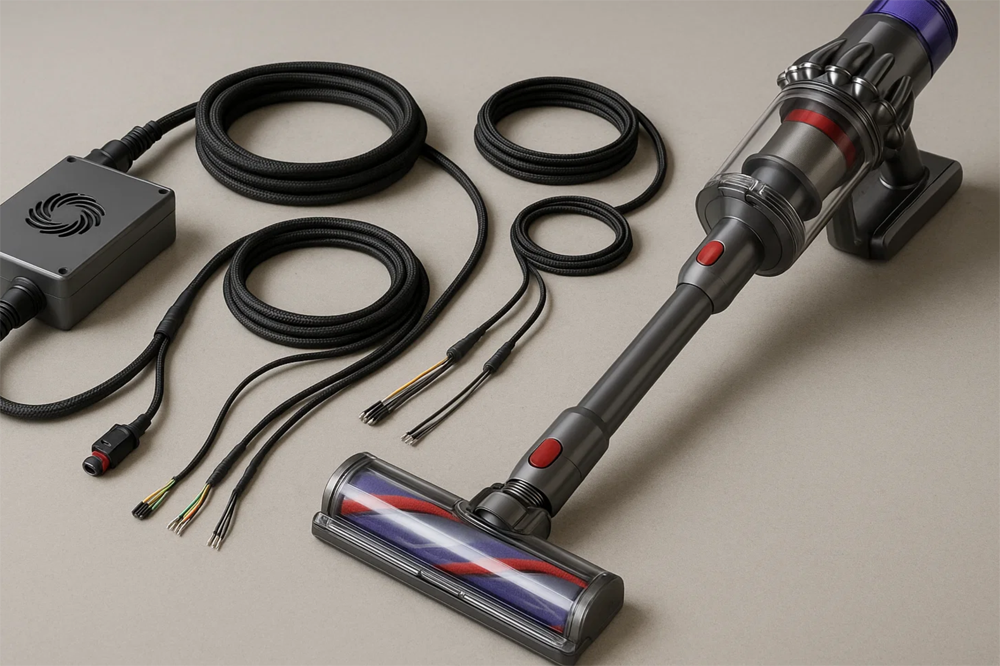
More Than Just a Bundle of Wires
When you get a custom cable harness assembly, you also want the assurance of these certifications. It’s evidence that the product was built under a disciplined process and that it meets globally recognized industry standards. In the end, the choice of materials, rigorous testing, and recognized certifications all weave together to define the quality of a custom cable harness assembly – ensuring it’s safe, durable, and ready to perform in whatever environment it’s designed for.

